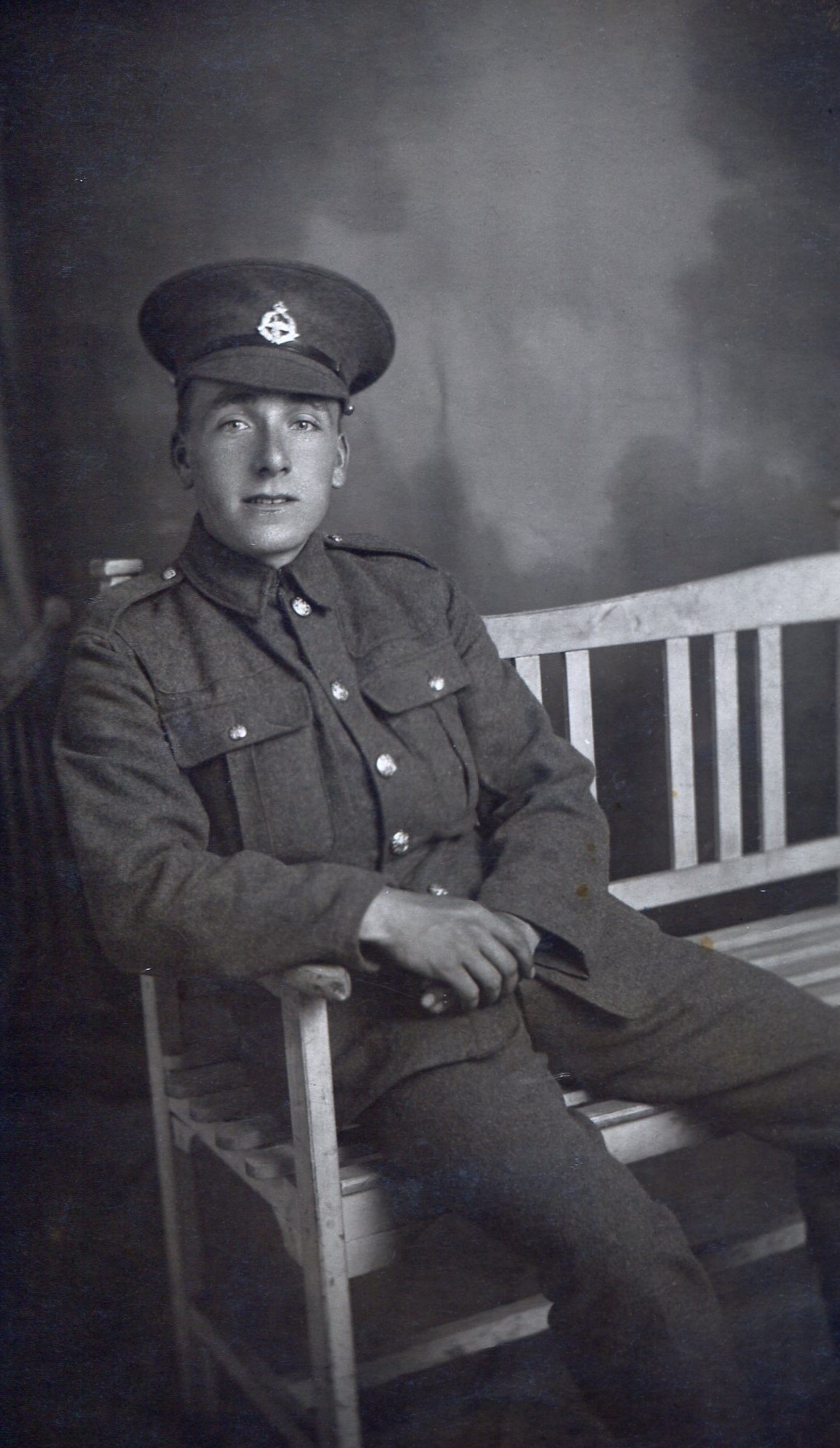Pte
Albert Percy Towns
Information about birth
|
Date of birth: 19/12/1897 |
|
Place of birth: Plaistow, Essex, England, United Kingdom |
Army information
|
Country: England, United Kingdom |
|
Force: British Expeditionary Force |
|
Rank: Private |
|
Service number: 41351 |
|
Enlistment place: Stratford, Essex, England, United Kingdom |
|
Units: — Suffolk Regiment, 1/4th Bn. (Last known unit) |
Information about death
|
Date of death: 26/09/1917 |
|
Place of death: Fitzclarence Farm, Belgium |
|
Cause of death: Killed in action (K.I.A.) |
|
Age: 19 |
Cemetery
|
Hooge Crater Cemetery Plot: IX Row: F Grave: 18 |
Distinctions and medals 2
|
British War Medal Medal |
|
Victory Medal Medal |
Points of interest 2
| #1 | Place of birth | ||
| #2 | Enlistment place |
My story
Albert was born late 1897 in Plaistow, Essex. By the summer of 1917 Robert served as a private in the Suffolk Regiment 1/4th Battalion, part of the 98th Brigade, of the 33rd Division.
The 33rd Division participated in the Battle of Passchendaele, which raged between 31 July and 10 November 1917. On 26 September 1917, the 33rd Division was to attack along the Menin Road. Two days prior to the attack, Albert’s Battalion moved into support. They occupied vacant trenches near Clapham Junction. Attempts to improve the trenches were followed by heavy shelling, as the Germans attacked the 33rd Division’s frontline, gaining a foothold in the frontline trenches at several points. The shelling of the area continued during the night. Two of the 1/4th Suffolks’ Company Headquarters took a direct hit and six men were killed.
In the early hours of the following day, the 100th Brigade was ordered to regain the ground lost on the 25th of September, while the 98th brigade was to cover the flank of the Australians who would advance through Polygon Wood. The 1/4th Suffolks took up a line, running from the concrete strong post at Fitzclarence Farm to Glencorse Wood. If possible they were to advance to a line running from Black Watch Corner to Carlisle Farm. No advance could, however, be made, as the troops on the left weren’t in position. The attack was thus delayed. While the 1/4th Suffolks were lining the parapet, ready to move, they were ordered to take cover, as the shelling turned in a barrage.
Eventually the officer commanding the 4th Suffolks ordered the two frontline companies to advance. While the right company moved forward, only fragments of the left company advanced. And though the attack itself was very confusing, the battalion reached Lone House and managed to consolidate their objectives. Throughout the day the 4th Suffolks were subjected to intermittent shelling and sniper fire.
Private Albert Percy Towns was killed in action on 26 September 1917. The 19-year-old was possibly killed by shellfire while lying in wait at Fitzclarence Farm. He was buried near the strongpoint. His remains were exhumed after the war and interred in Hooge Crater Cemetery.
The 33rd Division participated in the Battle of Passchendaele, which raged between 31 July and 10 November 1917. On 26 September 1917, the 33rd Division was to attack along the Menin Road. Two days prior to the attack, Albert’s Battalion moved into support. They occupied vacant trenches near Clapham Junction. Attempts to improve the trenches were followed by heavy shelling, as the Germans attacked the 33rd Division’s frontline, gaining a foothold in the frontline trenches at several points. The shelling of the area continued during the night. Two of the 1/4th Suffolks’ Company Headquarters took a direct hit and six men were killed.
In the early hours of the following day, the 100th Brigade was ordered to regain the ground lost on the 25th of September, while the 98th brigade was to cover the flank of the Australians who would advance through Polygon Wood. The 1/4th Suffolks took up a line, running from the concrete strong post at Fitzclarence Farm to Glencorse Wood. If possible they were to advance to a line running from Black Watch Corner to Carlisle Farm. No advance could, however, be made, as the troops on the left weren’t in position. The attack was thus delayed. While the 1/4th Suffolks were lining the parapet, ready to move, they were ordered to take cover, as the shelling turned in a barrage.
Eventually the officer commanding the 4th Suffolks ordered the two frontline companies to advance. While the right company moved forward, only fragments of the left company advanced. And though the attack itself was very confusing, the battalion reached Lone House and managed to consolidate their objectives. Throughout the day the 4th Suffolks were subjected to intermittent shelling and sniper fire.
Private Albert Percy Towns was killed in action on 26 September 1917. The 19-year-old was possibly killed by shellfire while lying in wait at Fitzclarence Farm. He was buried near the strongpoint. His remains were exhumed after the war and interred in Hooge Crater Cemetery.
Sources 4
|
Ancestry https://www.ancestry.co.uk/ Further reference |
|
CWGC https://www.cwgc.org/find-war-dead/casualty/459501/towns,-/ Sources used |
|
The long long trail https://www.longlongtrail.co.uk/army/ Sources used |
|
WarDiaries https://www.nmarchive.com. Further reference |
